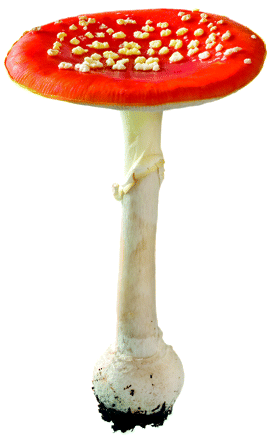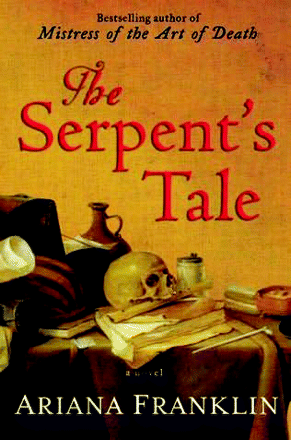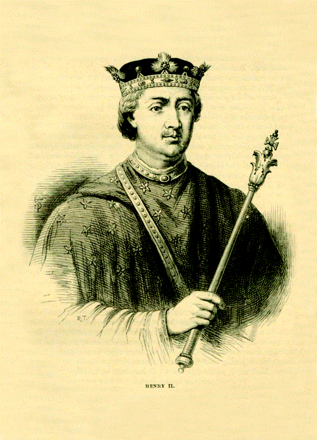Help At Hand
- P.K. Rangachari, MBBS, PhD

The Calling. Inger Ash Wolfe. Boston: Harcourt; 2009. 384 pages. $13.95. ISBN: 9780156033985
Simon just wants to help the sick as do thousands of younger Canadians. But compared to his contemporaries, who may invest time in medical education and training, Simon is unusually eager. He fashions a “medicine” bag that contains an odd mixture of herbals licorice root, valerian, belladonna, hops, yew tree extract, feverfew, and a particular mushroom powder. He moves across the vast country, from British Columbia to Quebec en route to the eastern coast, carrying his heavy valise and determined to heal.
Simon reserves his medical attention for the terminally ill, whom he tends exclusively by house call. They welcome Simon into their homes, having prepared themselves according to a clear set of instructions that Simon has sent to them in advance. In this way, Simon can go right to work upon reaching his patients’ homes. He opens his valise, arranges his materials, and conducts a brief exam, including a brief pain assessment. He administers a sedative, carefully considering dosage, and then he confirms that his patients are properly sedated. And then he kills them, recording each outcome with his Polaroid camera.
Simon’s house calls end with the same procedural attention with which they begin. Limbs are torn; throats slashed; jaws smashed; eyes torn out; skulls crushed; and body mutilated. Simon thinks of himself as a healer. The police think otherwise.
Hazel Micaleff is Detective Inspector at the Police Services detachment in Port Dundas, a small town in Northern Ontario. She is herself badly in need of medical aid. She suffers excruciating back pain, which she treats with oxycodone and generous doses of alcohol. As she hobbles towards retirement, she is also plagued by a failed marriage, a crusty old mother (and former town mayor), and indifferent superiors. Simon enters her orbit by killing and mutilating a longstanding member of her community. Against all odds, she takes on the serial killer as he weaves a path of “healing” from province to province.
Inger Ash Wolfe is the pseudonym of a “prominent North American novelist.” Her identity has been the source of some speculation, but for now, readers must approach the book without knowing much about the author. The novel itself is not so much a whodunit as a why-on-earth-is-he-doing-it and a will-he-ever-get-caught-at-it. The tension of the story is maintained by a tight timeline, beginning at 3:00 pm on November 12, a Friday, and continuing through Christmas and New Year’s. Wolfe’s cast of subsidiary characters are colorful, ranging from a prim detective pestered by a sex-starved pilot to a Francophone detective with a checkered past. Wolfe also paints a vivid picture of the vastness and emptiness of Canada as Simon crosses the country.

As writers work to create a realistic world, their credibility depends on factual consistency. With regard to the use of poisons in works of fiction, Stevens and Klarner have particularly stressed this point (1). Certainly, many readers will not really know whether a poison has been realistically administered or if the symptoms are described correctly, but for those in the know, a story can be ruined by deviations from fact.
The Calling is replete with facts for the toxicologically inclined, but how well does the author handle such facts? Among a long list of potential poisons (see above), Wolfe has the majority of her facts right. There are of course some slips. At one point, one of the detectives points out the differences between venous and arterial blood, alleging the former to be redder because it is oxygenated!
The more interesting bits of the story relate to the prominent use of deadly Amanita mushrooms, the poisonous nature of which has been well-documented for centuries. Wolfe correctly identifies Amanita biosporigera as destroying angel, endogenous to eastern and western North America. But here, too, some of the story’s elements do not correspond to known facts.
Ingestion of Amanita mushrooms leads to a well-defined toxidrome (2–5). An initial asymptomatic phase, ranging from six to twenty-four hours, is followed by an acute gastrointestinal phase with abdominal cramps, vomiting, nausea, and severe diarrhea. The persistence of this second phase (twelve to twenty-four hours) may impose severe electrolyte imbalances; a convalescent period may ensue that lulls both patient and physician into a false sense of recovery, but cellular damage continues to occur. The final phase can begin quite abruptly, marked by severe liver and renal dysfunction with rapid deterioration, convulsions, coma, and death.
Amanita toxicity is related to sets of peptides that include the phallotoxins and amatoxins (2–5). The phallotoxins stimulate the polymerization of actin into filaments. Their contribution to toxicity may be limited because they are poorly absorbed, although they may contribute to the early gastrointestinal symptoms. The amatoxins (nine identified, with α-amanitin being the most toxic) are thermostable cyclopeptides that inhibit RNA polymerase II and cause cell necrosis. Metabolically active tissues dependent on ongoing protein synthesis are thus particularly vulnerable.
In Wolfe’s novel, Simon sedates his victims, so that the absence of classic symptoms may seem reasonable, despite the oral administration of his mushroom powder. But the author nevertheless misses the mark in terms of her timeline. Simon’s first victim, for example, receives a buccal dose of the mushroom powder and is given to die within a few hours. In view of our knowledge of the mechanisms and timing of Amanita toxicity, this quick death is factually untenable.

The Serpent’s Tale. Ariana Franklin. Canada: Penguin; 2009. 384 pages. $24 CDN. ISBN: 9780143052852
Where Inger Ash Wolfe has perhaps fumbled, Ariana Franklin has not. The Serpent’s Tale is a novel in which Amanita is treated with a bit more respect for science. Here, the reader encounters Adelia, a medieval heroine who appears to have her facts quite right when it comes to the innocuous-looking, white-gilled, death cap mushrooms. Like Wolfe’s Hazel, Adelia is on the trail of a murderer; her suspicion is raised when she learns of a woman who has eaten the stewed mushrooms and allegedly recovered. Adelia explains:
It is a feature of this [mushroom] that those who eat it apparently get better for a while....Sickness and diarrhea at first,
abdominal pain, and then a day or two [apparently] recovering. But all the while the poison [attacks the] liver and kidneys.
The medieval England of Franklin’s tale is a far cry from Wolfe’s Canada, but there are similarities in plot and tone. Franklin’s Adelia Aguilar (or to give her full name, Vesuvia Adelia Rachel Ortese Aguilar) is, in modern parlance, a forensic scientist. She was introduced to readers in Franklin’s earlier novel, aptly called The Mistress of the Art of Death. Adelia, an abandoned child of uncertain origin, has been brought up by a Salernian Jew and his Christian wife. She is an accomplished doctor, educated at the liberal University of Salerno. In the earlier novel, Adelia finds herself in the kingdom of Henry II, one of England’s greatest rulers whose mention to the modern reader likely recalls an image of Peter O’Toole, the actor who portrayed Henry in the filmed versions of both Becket and A Lion in Winter. Poor Henry has had a bad rap from dramatists. The historical Henry is recorded as a fairly enlightened monarch. Crafty as well as wise, he had a significant impact on the development of the jury system in England. In the present sequel, Franklin again is deft in her portrayal of the King and his times. Struggle and strife are never far away.
- Copyright © 2009

P.K. Rangachari, MBBS, PhD, is Professor (Emeritus) of Medicine at McMaster University, Hamilton, Ontario, Canada. His research publications relate to epithelial transport and smooth muscle function. He continues to teach in the BHSc (Hons) Programme, most recently including courses (Toxic Tales; Drugs, Devices and Desires) for undergraduate science students, melding toxicology, history, and creative writing. E-mail: chari{at}mcmaster.ca; fax 905-540-3825.




